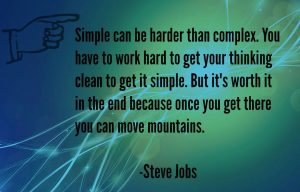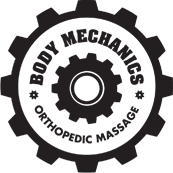Being Simple For Your Consent For Massage Is A Best Practice That Will Take You Far…
One of the things I believe is really important in health care, for a number of reasons, is that consent not only must be given, but given in a way that clients understand what they are agreeing to. All too often in health care, especially in manual therapy, there is the tendency towards a professional chatter that is trendy , but to the patient really has no meaning. This is one of the places where a patient/client differential might lurk unseen even by someone with the best of intentions.
Frequently in my space we will hear from reception that a client is looking for “fascia work, trigger point or ART”. We have an extensive intake at our location where we actually sit down with patients beforehand, and generally what we find is that MOST people do not actually know what those things are, they are seeking those things based on research, advice, trend or referral. Typically people do not feel comfortable admitting what they do not know to another person such as in an intake. Therefore, health care workers must try to provide a safe environment to guide people through letting go of choices that may not fit and making choices that make sense for them.
I always advocate for using medical terms whenever possible when referring to anatomy and professional conduct. However in talking to clients, we have to let go of that vernacular. Patients are not just there for a massage–they want to understand what is happening to them. Consent is not consent unless the patient fully understands what they are agreeing to. When proposing a verbal contract to a client on a path of treatment, we need to speak in plain descriptive language that the person can understand.
treatment, we need to speak in plain descriptive language that the person can understand.
With that in mind, I have put together a list of common “modalities and terms” that we use frequently which have virtually no meaning to a client (and sometimes not even to us) along with some suggested substitutions. Remember, I am not trying to describe what is happening in the body during the modality (some of that is up for grabs anyway), but what the client would anticipate or feel.
Here is a quick example of what I am suggesting.
Rather than saying: ‘So for this treatment, after warm up, I think we should do about 30 minutes of fascia work and trigger point to the hamstrings’
The practitioner could instead say ‘ What I am suggesting for this treatment is about 10 minutes of warming the tissue, using stroking motions with lotion. Then what I would like to do is start working the skin by pulling it gently, moving it around and torquing it. Finally we will progress to some deeper longer holds using firm finger or elbow contact where I am going to focus on the area just above the knee and below the hip’
Here are my suggested possible substitutions for industry fluff
Fascia work– I am going to preform skin stretching, pulling or traction of surface tissue, torquing of the skin
ART / Pin and Stretch– I am going to be holding the muscle and resisting slightly (or pinning it down) while moving it through a range of motion. Alternatively: Holding a muscle and pinning it down while you move it thorough a range of motion.
Stretching– I will extend the muscle until you feel tension and hold
PNF stretching / contract relax etc– Take you into a position of stretch for the (effected) muscle and then ask you to contract, resist, or pull against me possibly in a sequence
Trigger point– I will use sustained pressure into the muscle using fingers, thumbs or elbows.
Lymphatic Drainage– Using very gentle pressure, I am going to try to simulate the natural movement of the tissue that would occur with muscle pumping when the body is relaxed.
Deep tissue– We can work deep specific. I will listen to your verbal feedback and from what I feel physically, and make adjustments to my pressure as needed. If there is an area where you feel that you need more pressure, we can specifically target that area.
Distraction- I will gently hold the joint or tissue to create space between the surfaces inside the joint that we cannot see.
And so on, and so forth. If you are a science based practitioner, this jargon that we use daily helps keep the waters murky as to what we are actually doing. It’s a best practice to be simple and clear. Plain Jane never had it so good.
